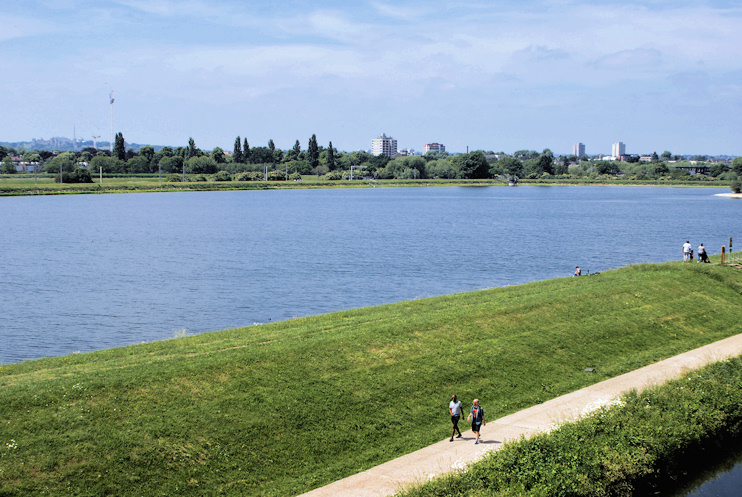Coppermills
Coppermills, Waltham Forest
A watery quarter lying beside Walthamstow Marshes on the southern banks of the River Lea (Walthamstow) reservoirs

A watermill was in existence here by the 14th century, when it ground corn. Gunpowder was made during the 17th century and the vicinity was at the time known as Powdermill Marsh. Thereafter, the mill successively produced paper, leather (presumably grinding bark here to yield tannin) and linseed oil.
The mill was rebuilt c.1806 in London stock brick with Portland stone dressings. As is obvious from the photograph above,* the original roof has since been replaced. New owners the British Copper Company smelted ore at its works near Swansea and brought copper ingots here in barges – by sea, and then via the Thames and the Lee Navigation. The ingots were rolled into sheets that were used for various purposes, including stamping halfpenny and penny Conder tokens. Copper rolling and stamping continued here until 1857.
The mill was acquired by the East London Waterworks Company in 1859 and the Italianate tower was added in 1864 to accommodate a Cornish Bull engine. This and the mill’s waterwheels helped drain the surrounding marshes during the construction of the Walthamstow reservoirs.
The first reservoir opened to the north of the mill in 1863. There are now a dozen, covering 300 acres and serving 1.5 million customers – as well as forming one of London’s biggest fisheries. The Coppermill Stream runs through the middle of the reservoirs.
Nowadays, the Coppermills building is used as stores and most of the vicinity is occupied by Thames Water’s filter beds and pumping stations, which replaced the Lea Bridge waterworks in 1972. Water from the New River arrives here after its journey south through Hertfordshire and the Coppermills water treatment works is a major supplier to the London ring water main. The regularly-tested Coppermills chlorine siren will warn locals if there is ever a leak of toxic gas (see the comments beneath this image on Flickr).
The neighbouring residential area lies on the western edge of Walthamstow. This is a socially and culturally mixed locality and the four largest ethnic groups here are of white British, Pakistani, Polish and Caribbean heritage.
The Coppermill public house is located at the corner of Coppermill Lane. The establishment took its present name c.1986, before which it was called the Lord Kitchener.
Coppermill Fields is a nature reserve wedged between the railway line and the western edge of the waterworks. Coppermill Park is a small recreation area situated at the south-west corner of Coppermill primary school.

In December 2017 the Coppermills building’s Italianate tower was opened to the public as part of the Walthamstow Wetlands project. There are information boards in the entrance and panoramic vistas in all directions, like the view over the Warwick Reservoir East, shown above.
